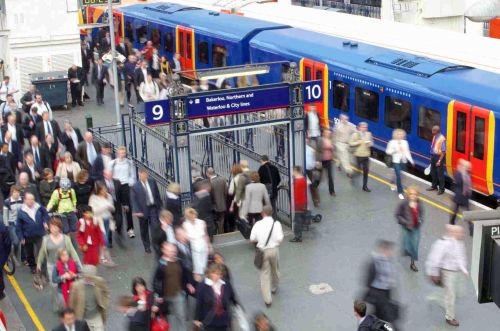In a report entitled Transport for a World City (PDF link), which was published on March 10, the NIC identifies four challenges which will face London's rail network from the late 2020s. These include overcrowding on key Underground Lines; lack of capacity on commuter lines and at major main line stations; insufficient orbital links, particularly in the east of the city, and the need for transport to promote housing growth. Congestion is forecast to be particularly acute on north - south Underground lines, commuter services in the southwest of the city, and at major stations on these routes.
Modelling by TfL shows that overcrowding on sections of the Victoria, Northern and Central lines will cause operational difficulties by the 2030s and the number of passenger-km travelled in crowded conditions on the Underground will incrase by 50% by 2031. On the heavy rail network, Waterloo, Victoria, and Clapham Junction stations are forecast to see a 40% increase in passengers by the early 2030s.
In this context, the Crossrail 2 and its core cross-city tunnel between Wimbledon and Tottenham Hale is deemed vital for a city whose population is forecast to increase from 8.6 million today to more than 10 million in 2030.
The NIC recommends that the Department for Transport (DfT) and Transport for London (TfL) should be allocated sufficient development funding to prepare a hybrid bill for Crossrail 2, starting with a revised business case, which should be submitted by March 2017.
The NIC also emphasises the need for the DfT and TfL to draw up clear proposals to maximise the benefits and the viability of the project: These include:
- Identifying proposals to phase costs and increase affordability (including delaying the north-western branch to New Southgate could reduce the cost of the initial scheme in the 2020s by around £4bn)
- Delivering a funding plan in which London contributes more than half the total cost of the project
- Developing a strategy to maximise private sector participation in the development and funding of stations and their surrounding areas, and
- Developing a clear strategy to ensure the construction of at least 200,000 new homes along the route.
The NIC suggests that a hybrid bill should be submitted to parliament by 2019 with the aim of completing the line by 2033.


